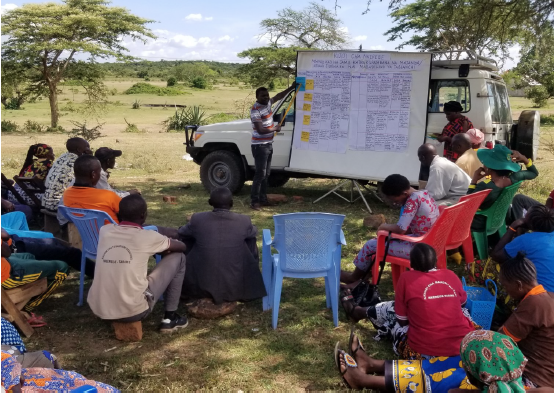9th Workshop for participatory design (WPRD)
.jpg)
Sustainable Agriculture Tanzania (SAT) has trained farmers in various Agroecological (AE) practices ranging from farm preparation to post-harvest handling. Farmers who have been practising AE acknowledge that AE practices generate many benefits, including environmental, health, economic, and social benefits. The socioeconomic benefits include improved household food security and increased income.

Even though farmers understand the benefits of AE practices, they are some challenges on the farm. Among the arguments they provide are the following:
- There are no ready-made organic inputs (biofertilizers and biopesticides) available for them to use in their farms.
- Ineffective inputs, especially botanical extracts, when applied to the crops such as cereals and spices.
- AE practices for pest management are tedious as they spend much time spraying botanicals in the same field.
- It is hard to practice AE in large farms as they must apply large quantities of organic inputs (biofertilizers and biopesticides), which they claim to be labour-intensive.
- The prices for the products produced using AE practices do not incentivise them to continue producing using AE practices.
- Shortage of pastures in the dry spell force livestock keepers to move, increasing land resource use pressure.
As an organization promoting sustainable farming methods, we are very determined to address the concerns farmers raise to ensure they continue practising AE on their farms. Apart from training them on best AE practices, we are also dedicated to researching so that, in the end, all the concerns raised by farmers are addressed. Since 2014 we have dedicated some financial resources to researching AE, and to some extent, they have provided solutions to what farmers are complaining about. AE cannot be isolated from the rapidly growing technology in the agriculture sector. When you hear from farmers, their concerns imply that AE practices need some mechanization. Dedicating resources to the research may help to attain what farmers want under AE.

As a young researcher, you a part of the change by contributing through conducting participatory research with farmers to find the solutions which will address the farmers’ concerns raised about practising AE. We invite students from Sokoine University of Agriculture (SUA) who are in year 3 of their study and year 5 of their study for those programs which run for five years to attend the 9th workshop for participatory design (WPRD) on 10th December 2022, where you will learn more about the challenges and come up with a concept of addressing the challenge.

WPRD is part of the Farmer-Centred Agroecology Research (FCAR) which provides solutions for small-scale farmers practising agroecological farming methods. The FCAR decentralizes the research process and puts the farmers at the centre where they can express their key issues. Students start collaborations with farmers to design and conduct participatory research to address these issues.

The best concepts will be selected and supported with TZS 1,100,000 for undergraduate and TZS 3,300,000 for post graduate students. The only way to get these funds is to participate the workshop and put up the convincing concept note that will show clearly how you will address the challenge. Concept with the focus of innovating farming equipment to simplify AE practices are highly encouraged
To participate to this workshop please send your expression of interest (EI) to us through our communication email wprd@kilimo.org not later than 2nd December 2022. The EI should not exceed 300 characters. Those who will write good EI will be invited to attend the workshop.






